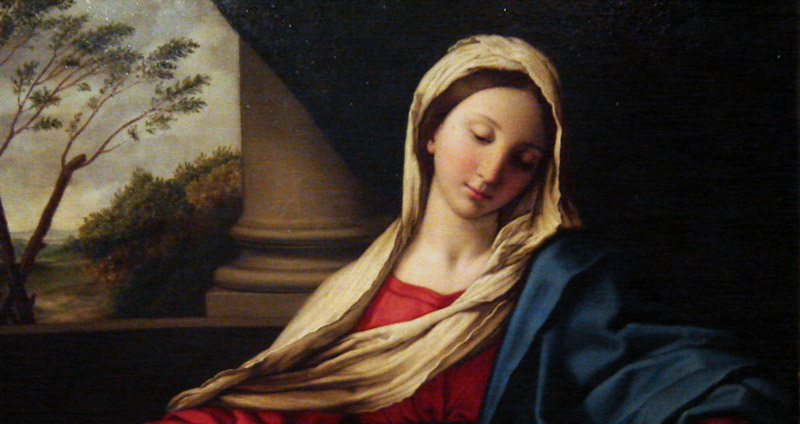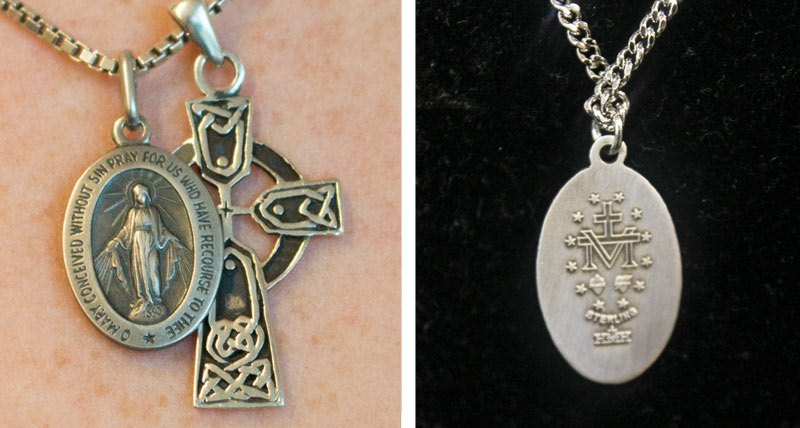
May is Mary’s month. In the Catholic Church she is honored with processions, statues crowned with flowers, and people praying the rosary and singing in her honor.
Some people even put up altars to her in their homes.
In church history, the connection of Mary with May can be traced back to its earliest roots in the 13th century.
It is a logical time to honor the mother of Christ because in many early cultures, the month was already considered a symbol of motherhood, springtime and new life.
What better time to honor the woman who accepted God’s will and brought his son into the world?
Despite all this outward devotion, however, do most of us really appreciate what Mary means to Catholics and why she is so important to the church?
When we say the “Hail Mary” or recite the many prayers of the rosary, we may not really think of what she symbolizes and what spiritual gifts her example can offer.
Theologians, clergy and people with a special devotion to Mary say many riches await people who go beyond rote prayers and surface knowledge about the Blessed Mother to learn about her true nature and power.
Always ready to intercede
One of the biggest misconceptions about Catholic devotion to Mary is that people are worshipping her when they offer up prayers to her.
Her actual role, according to church teaching, is as intercessor between the faithful and
God himself.
According to the Catechism of the Catholic Church, “From the most ancient times the Blessed Virgin has been honored with the title ‘Mother of God,’ to whose protection the faithful fly in all their dangers and needs.” (p. 971).
The Catechism goes on to state that this prayerful devotion differs from the adoration accorded to God.
“When you look at art about Mary, her arms are always open and always in a welcoming
position,” said George S. Worgul Jr., chair of the theology department at Duquesne University in Pittsburgh.
“She’s accepting, she’s a mother of all people. She behaves like a mother because she’ll listen and help,” he said.
Worgul said it’s important to realize that even though Mary was taken up into heaven, celebrated in August on the Feast of the Assumption, her active role in the daily spiritual life of the church and its people has not changed at all.
“She already knows what heaven is, but she hasn’t stopped,” he said. “It’s not as though she did her job and it’s over. She’s still considered someone who can now powerfully intercede for people.
“That’s like what mothers do. Mothers don’t ever stop trying to help, support and encourage their children,” he said. “It’s important to see Mary as an example for our lives, but also still a player in the game. It gives us a lot of hope to know that there’s someone interceding for us who is like us, who can understand and is sympathetic to our needs. When we realize that and have that hope, it can have a big effect on us.
”Mary Limpert, a member of the Legion of Mary at Our Lady of the Hills Church in Columbia, said she became a member of the group, dedicated to prayer and evangelization in Mary’s name, because she felt a deep devotion to her and her power to intercede with God. Because she is the mother of God, when you go to her it’s like going to your own mother when you want or need her help,” Limpert said. “She was so instrumental in Christ’s life when He was here on Earth, and I believe she is the closest person to Him. She is a mediatrix between us and God, and that’s why I want to be as close to her as I can.”
The many faces of Mary
She has been given many names throughout the history of the church, all referring in some way to her role as mother of Christ and a source of hope and solace.
The many faces of Mary are reflected here in South Carolina, most prominently at the state’s only shrine.
The Shrine of Our Lady of South Carolina-Our Lady of Joyful Hope, located in Kingstree, was inaugurated by Bishop Robert J. Baker in 2006.
Different ethnic groups in the state honor specific visions of Mary. Mexican Americans have an extreme reverence for Our Lady of Guadalupe. They hold elaborate celebrations for her feast in December and often display her painting on cars and in their homes.
Vietnamese Catholics honor Our Lady of La Vang who appeared to the martyrs.
Many Filipinos honor the Virgin of Penafrancia, who appeared in the nation’s Bicol province. Polish Catholics call on Our Lady of Czestochowa.
Around the diocese, 24 churches and missions are dedicated to Mary. Some simply bear her name, others include manifestations such as St. Mary of the Angels in Anderson or
Edgefield’s St. Mary of the Immaculate Conception.
Some parishes dedicated to her reflect the geography of the area, such as Our Lady of
the Valley, located in an area known as the Horse Creek Valley in Gloverville. Our Lady
of the Lake in Chapin was so named because it is close to Lake Murray.
Our Lady Star of the Sea in North Myrtle Beach was named because it is close to the ocean, and many of its original members also had a special devotion to her, said Russell Burgess, a member of one of the parish’s founding families.
According to a published church history, St. Mary Our Lady of Ransom in Georgetown
was named to honor both the Blessed Mother and because it was the name of a church founder. In his homily at the church dedication in 1902, Bishop Henry P. Northrop referred to “His Blessed Mother, Our Lady of Ransom,” so that name was added as well.
On May 6, hundreds of members of St. Mary Help of Christians Church in Aiken held a large procession through the streets between the parish school and church. Members of
the Knights of Columbus carried a painting of St. Mary Help of Christians, blessed later that afternoon by Father Gregory B. Wilson, pastor.
Father Wilson said the church takes its name from a historic image of Mary developed from the 1571 Battle of Lepanto, when Catholic forces defeated Turks off the western coast of Greece.
The pope at the time asked people to pray the rosary, and the victory was then dedicated to Mary Help of Christians, which was officially inserted into the Litany of Loreto in 1600.
“Mary is always there to help us in our greatest need,” Father Wilson said. “She helps us with her prayers, helps us find Jesus in the midst of trouble and trial. Just like the Battle of Lepanto, those are dark times, yet her example helps bring people through. Her prayer helps us win the victory.”
Mother of hope, faith and love
One key to understanding Mary is to remember that she is a human being who said “yes” to God’s will, and her answer changed history, said Father Regis Armstrong, OFM Cap., a professor of religious studies at Catholic University in Washington, D.C.
“She was a young Jewish girl, praying the Scriptures, and in her prayer all of a sudden an angel appears to her and asks her to be the mother of God,” Father Armstrong said. “The spontaneity of her yes is the important thing. It’s key to understanding her relationship to God and to us. We tend to brush that off and make her a plastic statue. Her answer to God is proof that God was working through her and can work in the world through us.”
People can make the world a better place if they emulate Mary’s willingness to listen to God’s will, her faith in God’s goodness and her willingness to sacrifice for others, Father Armstrong said.
Because she is a human being who opened her heart to Christ, the Blessed Mother can be a source of hope not only for the faithful, but also those who are struggling with their beliefs, have fallen away or are newly exploring Christianity, said Father Patrick J. Stenson, parish administrator of Precious Blood of Christ Church on Pawleys Island.
“Mary has been very powerful in bringing many people to God, as an evangelizer and professor of God,” Father Stenson said. “When I think of Mary, I think of how she brought light and hope to the world. As a priest, my mission is to bring Christ to others, and Mary symbolizes that.
“She brought Christ into the world and symbolizes God’s fidelity to His people. She gave light and hope to the world, and she’s still interceding for her children with powerful prayers.”
Photos by Christina Lee Knauss



